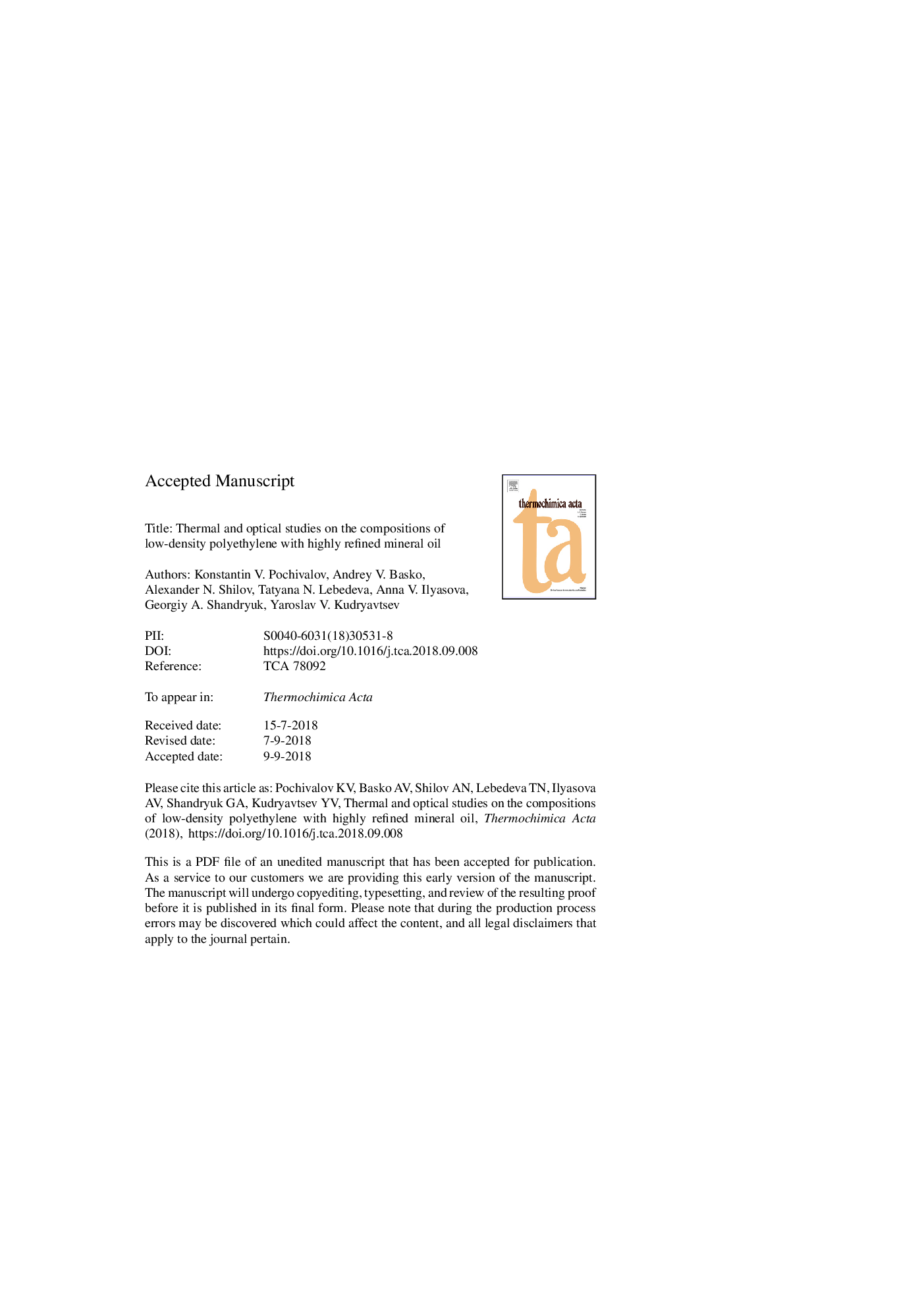| Article ID | Journal | Published Year | Pages | File Type |
|---|---|---|---|---|
| 10152068 | Thermochimica Acta | 2018 | 24 Pages |
Abstract
An original optical method and differential scanning calorimetry were used to construct an experimental phase diagram for the binary composition low-density polyethylene - highly refined mineral oil. This diagram includes the polymer full amorphization curve and the oil solubility curve that describes the osmotic equilibrium between the swollen polymer and pure mineral oil. Within the domain between these curves, the system can be identified with a single-phase microheterogeneous gel with polymer crystallites as physical crosslinks. Two critical compositions containing 17 and 36â¯wt% of polyethylene were found. The first one corresponds to the least amount of polymer needed to form a capillary-porous body upon cooling down the pre-homogenized mixture. The second composition contains the fraction of oil above which the polymer full amorphization temperature is no longer decreased. Comparing with the optical method, calorimetry is much faster and able to catch weak mineral oil crystallinity, but less accurate and unable to supply any data for the solubility curve. An empirical analysis of the parameters describing the polymer full amorphization curve allowed us to conclude that mineral oil is less miscible with low-density polyethylene than decane and tridecane. The results obtained can be useful for the optimization of the properties of rubber-based vibration-damping compositions filled with polyethylene and mineral oil.
Related Topics
Physical Sciences and Engineering
Chemical Engineering
Fluid Flow and Transfer Processes
Authors
Konstantin V. Pochivalov, Andrey V. Basko, Alexander N. Shilov, Tatyana N. Lebedeva, Anna V. Ilyasova, Georgiy A. Shandryuk, Yaroslav V. Kudryavtsev,
